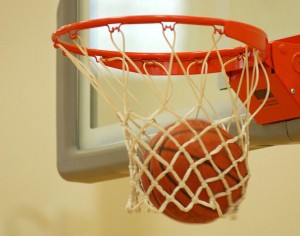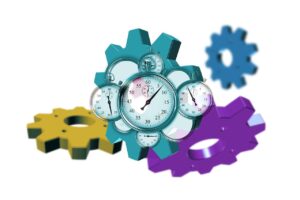NCAA Loses Summary Judgment, Must Now Defend Amateurism Scam At Trial In Monumental Antitrust Case
The NCAA faces an uphill battle this time.
 The jig is up for the NCAA.
The jig is up for the NCAA.
After surpassing $1 billion in revenue, shrugging off rampant academic fraud, and permitting everyone (including a damn nun) to get a piece of the action except the athletes, the NCAA will finally have to defend its perverse and laughable amateurism model in court.
And it is not going to be pretty.

A Law Firm Checklist For Successful Transaction Management

On Wednesday, U.S. District Judge Claudia Wilken of the Northern District of California shut down the NCAA’s motion for summary judgment in In Re: NCAA Athletic Grant-In-Aid Cap Antitrust Litigation (4:14-cv-02758) and ordered a bench trial in December on the issue of whether the NCAA’s limits on compensation for college athletes violate antitrust law. (full opinion below).
At their core, the plaintiffs, a class of former and current Division I football and basketball players, seek an injunction to stop the NCAA from capping athletic scholarships to grants-in-aid and the full cost of attendance. Essentially, they want a completely free market system where schools would bid for top athletes unrestrained by the cost of attendance ceiling and where athletes could capitalize on their names, images, and likenesses.
To achieve this seismic shift in the collegiate model, the plaintiffs must establish a claim under Section 1 of the Sherman Act. As Judge Wilken explained, the plaintiffs must demonstrate “(1) that there was a contract, combination, or conspiracy; (2) that the agreement unreasonably restrained trade under either a per se rule of illegality or a rule of reason analysis; and (3) that the restraint affected interstate commerce.” (internal citations omitted).
Judge Wilken also made it clear that the Plaintiffs had largely already done so. She held that:
Sponsored

Not All Legal AI Is Created Equal


Trust The Process: How To Build And Manage Workflows In Law Firms

A Law Firm Checklist For Successful Transaction Management


Trust The Process: How To Build And Manage Workflows In Law Firms
The existence of a contract, combination or conspiracy that affects interstate commerce is undisputed in this case. NCAA regulations are subject to antitrust scrutiny under the Sherman Act and must be tested using a rule-of-reason analysis. Under that analysis, Plaintiffs bear the initial burden of showing that the challenged restraints produce significant anticompetitive effects within a relevant market. If Plaintiffs meet this burden, Defendants must come forward with evidence of the restraints’ procompetitive effects. Plaintiffs must then show that any legitimate objectives can be achieved in a substantially less restrictive manner.
If Judge Wilken sounds familiar, it is because she was the judge that ruled in favor of the plaintiffs in O’Bannon v. NCAA, 7 F. Supp. 2d 955 (N.D. Cal. 2014). The key part of her ruling in O’Bannon, which was largely upheld by the Ninth Circuit (802 F.3d 1049 (9th Cir. 2015)), was that the NCAA’s rules were subject to antitrust scrutiny. Until that point, the NCAA hid behind the shield of a 30-year-old Supreme Court decision, NCAA v. Board of Regents of the University of Oklahoma, 465 U.S. 85 (1984). But the Ninth Circuit made it clear that Judge Wilken was correct in finding that the NCAA’s restraint on compensation was subject to the Rule of Reason and that Board of Regents did not apply.
In the wake of O’Bannon, college athletes saw a number of incremental changes, including the increase in scholarship values to the full cost of attendance — something the NCAA now touts as an altruistic handout even though it would have never happened without litigation.
While O’Bannon stole the headlines, two other cases that were consolidated into In Re: NCAA Athletic Grant-In-Aid Cap Antitrust Litigation, one with a lead plaintiff of former West Virginia football player Shawne Alston and the other by former Clemson football player Martin Jenkins, that actually posed a greater threat to the future of the college athletics cartel, which is now coming to fruition.
The Alston case sought damages for all Division I football and basketball players (men and women) based on the difference between the value of their scholarships under the NCAA’s prior unlawful system and the full cost of attendance post O’Bannon. The NCAA settled the damages portion of that case last year for $208.7 million.
Sponsored

How To Build And Manage Your Law Firm Rate Sheet

How Savvy Lawyers Build Their Law Firm Rate Sheet
The Jenkins case sought an injunction to end the capping of scholarships to grants-in-aid and the full cost of attendance, which is now headed to trial.
Although the NCAA will never admit defeat, what Judge Wilken did in her summary judgment ruling this week was back the NCAA into a corner where it must show why capping scholarships and prohibiting athletes from competing in a free market is procompetitive. She explained,
Plaintiffs have produced undisputed evidence that greater compensation and benefits would be offered in the recruitment of student-athletes absent the challenged rules, meeting their burden for summary adjudication on this question. Defendants . . . have not meaningfully disputed Plaintiffs’ showing that the challenged restraints produce significant anticompetitive effects within the relevant market. Because Plaintiffs have met their burden and Defendants have not created a factual dispute, the Court will grant the parties’ cross-motions for summary adjudication of this element and find that the challenged restraints produce significant anticompetitive effects in the relevant market.
Thus, Judge Wilken only left the NCAA with two outs at trial to counter the plaintiffs’ showing of anticompetitive effects. The NCAA will have to prove that its current rules “serve the procompetitive purposes of ‘integrating academics with athletics,’ and ‘preserving the popularity of the NCAA’s product by promoting its current understanding of amateurism.’”
It seems impossible for the NCAA to argue that the current system upholds academics and promotes true amateurism with a straight face.
One of the NCAA’s star witnesses, $2,300 an hour professor James Heckman, testified at his deposition that paying athletes would divert them “away from actually being students and towards just being athletes.”
Who wouldn’t love a crack at cross-examining him about the UNC academic scandal? Does anyone honestly believe top football and basketball players are truly students first? The NCAA literally reviewed proof that one of its premier institutions enrolled athletes in fake classes and they did nothing. The “academics first” defense is just not going to hold up.
On the second procompetitive justification for preserving the current product, the NCAA has repeatedly argued that if athletes are paid beyond scholarships then nobody will watch their games.
But thanks to the FBI, we know this is not true. It is now widely known that top basketball players are receiving as much as six figures to persuade them to commit to certain schools. Yet March Madness continues to be one of the most viewed television broadcasts of the year.
Remember, the refrain from the NCAA used to be that increasing the value of scholarships to the full cost of attendance would ruin the popularity of their sports. Well, the change happened and nobody has stopped watching. Now we have proof that athletes are getting paid directly, and yet, magically, fans keep watching.
Keep in mind, too, that this trial will take place between the football conference championships and bowl season — both of which bring in massive television and endorsement dollars while serving as prime examples of the hypocrisy of the NCAA’s amateurism model.
Try defending amateurism while players are mandated to wear Nike shoes and drink only from Powerade branded cups in the Beef O’Brady Hancock Tire Tilted Kilt Bowl. But yes, please go ahead and try to tell the judge that licensing bobbleheads of a nun is fully in the spirit of amateurism.
Needless to say, trial is going to be excruciating for the NCAA.
(Full opinion on the next page…)
Steve Silver is a former sports reporter for the Las Vegas Sun and is now a lawyer in Portland, Maine. You can reach him at [email protected] or on Twitter @thelegalblitz.







